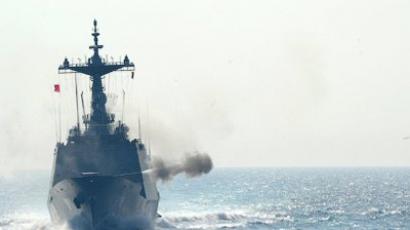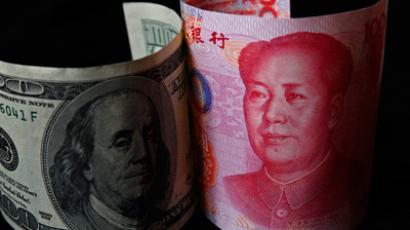‘This is not about China’: US to move majority of warships to Asia-Pacific

The US is set to reposition its Navy fleet with the majority of its warships to be assigned to the Asia-Pacific by 2020. But this military strategy has nothing to do with US-Chinese rivalry in the region, the defense secretary assures.
The US would reposition its Navy so that 60 per cent of its warships would be assigned to the Asia-Pacificregion by 2020, compared to about 50 per cent now, US Defense Secretary Leon Panetta told senior civilian and military leaders from about 30 Asia-Pacific nations at an annual security forum in Singapore."Some view the increased emphasis by the United States on the Asia-Pacific region as some kind of challenge to China. I reject that view entirely," he said. "Our effort to renew and intensify our involvement in Asia is fully compatible… with the development and growth of China. Indeed, increased US involvement in this region will benefit China as it advances our shared security and prosperity for the future."But in laying out core US principles in the region, Panetta made clear Washington opposed any attempt by Beijing to make unilateral moves in its push for territorial rights in the oil-rich South China Sea.Panetta's comments came at the start of a seven-day visit to the region to prove to its Asian allies that it intends to remain a crucial military and economic power in the region to counterbalance China's growing influence. The trip includes stops in Vietnam and India, and comes at a time of renewed tensions over competing sovereignty claims in the South China Sea, with the Philippines, a major US ally, and China in a standoff over the Scarborough Shoal near the Filipino coast.The US aims to reassure its allies that Washington would act to counterbalance China's growing influence on the South China Sea as part of its foreign policy known as the "pivot to Asia". Panetta said the US will be committed to alliances instead of new permanent bases and mentioned treaties with Japan, South Korea, Thailand, the Philippines and Australia as well as partnerships with India, Singapore, Indonesia and others.Panetta also said Washington also would work to increase the number and size of bilateral and multilateral military training exercises it conducts in Asia-Pacific. Officials said last year the US carried out 172 such joint drills in the region.Panetta reiterated he was committed to a "healthy, stable, reliable and continuous" military-to-military relationship with China, but underscored the need for Beijing to support a system to clarify rights in the region and help to resolve disputes."China has a critical role to play in advancing security and prosperity by respecting the rules-based order that has served the region for six decades," he said.President Obama unveiled the new US defense strategy at the start of the year. The US leader stressed that the shift in focus to Asia comes amid increasing concern at the Pentagon over China's strategic goals. Beijing begins to field a new generation of weapons that American officials fear are designed to prevent US naval and air forces from projecting power into the Far East.In response, Beijing warned the US to be "careful in its words and actions and do more that is beneficial to the development of relations between the two countries and their militaries." The Chinese Foreign Ministry stated the expanded US military presence in Asia was based on a miscalculation of Beijing's intent to modernize its military defenses. "The accusation targeting China in the document has no basis, and is fundamentally unrealistic," the Foreign Ministry proclaimed back in January, shortly after the release of Washington’s new strategy. "China adheres to the path of peaceful development, an independent and peaceful foreign policy and a defensive national defense policy.”
A day after laying out details of the Pentagon's new Asia-Pacific strategy, US Defense Secretary Leon Panetta visited Vietnam, seeking a return to long-abandoned military ports in the country. Panetta’s visit to Vietnam is likely to irritate China, which is unhappy with any US build up in the region. American radio host and author Stephen Lendman, says the US military build-up in Asia is undoubtedly aimed at China. “North Korea is the punching bag, China is the target – and China knows it, as well as Russia knows it is being encircled with military bases,” he told RT.Washington made it clear it intends to find new allies in Asia and help to enforce those countries' maritime rights in controversial areas with China. That is why the US has attack ships with nuclear weapons are close to Chinese borders, including in the South China Sea which Beijing considers its waters, while “America wants to come in and usurp them.”“Just imagine China, Russia or any other country wants its fleet off America’s east or west coast. For the (American) Congress that would probably be an act of war,” Lendman supposes.Economically, politically and even militarily China is dominating the South East Asia so for the countries that choose between Washington and Beijing the choice is anything but simple.














